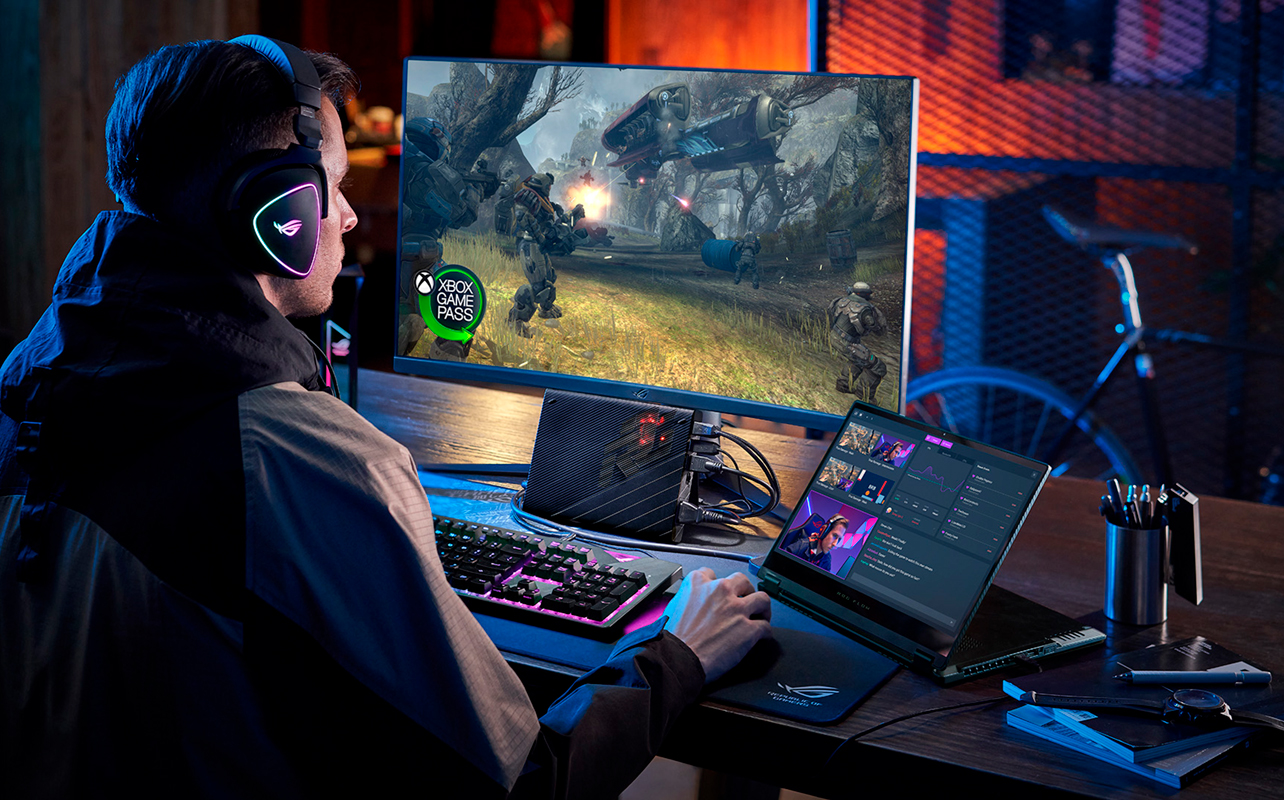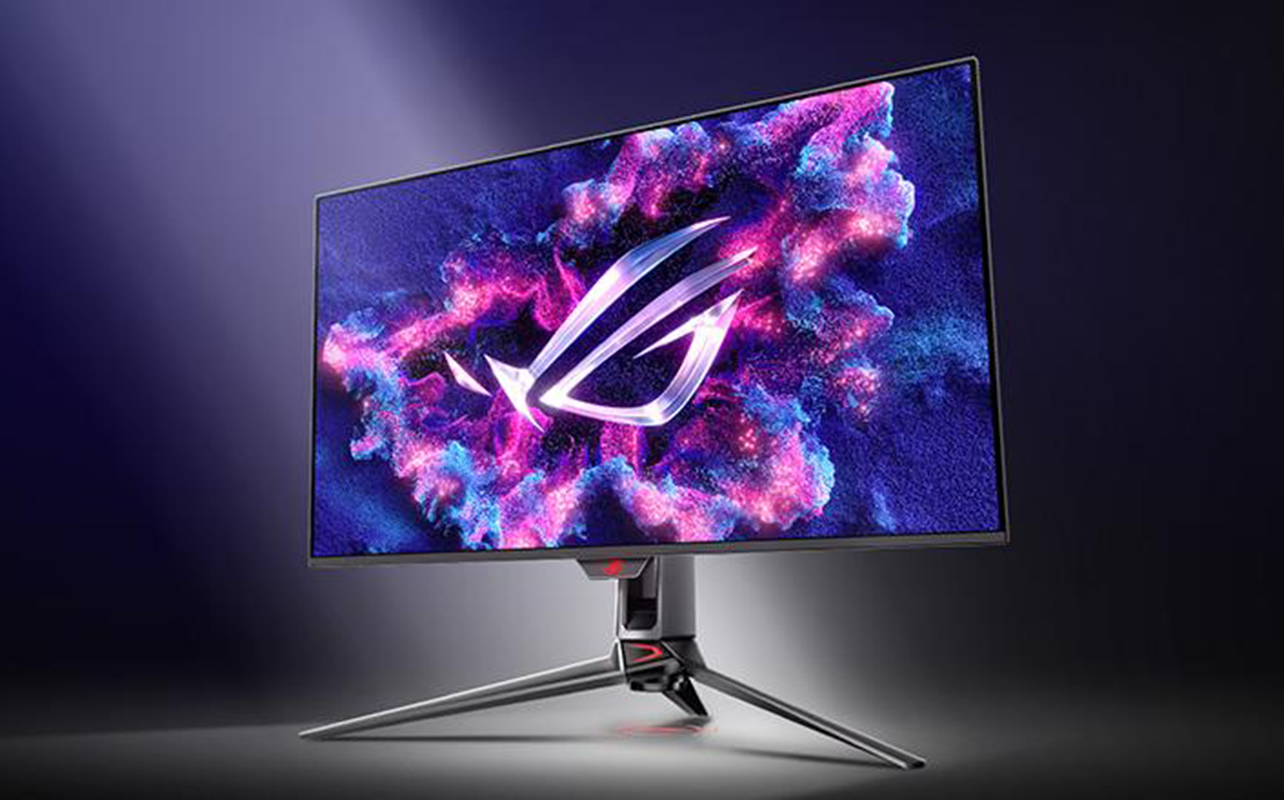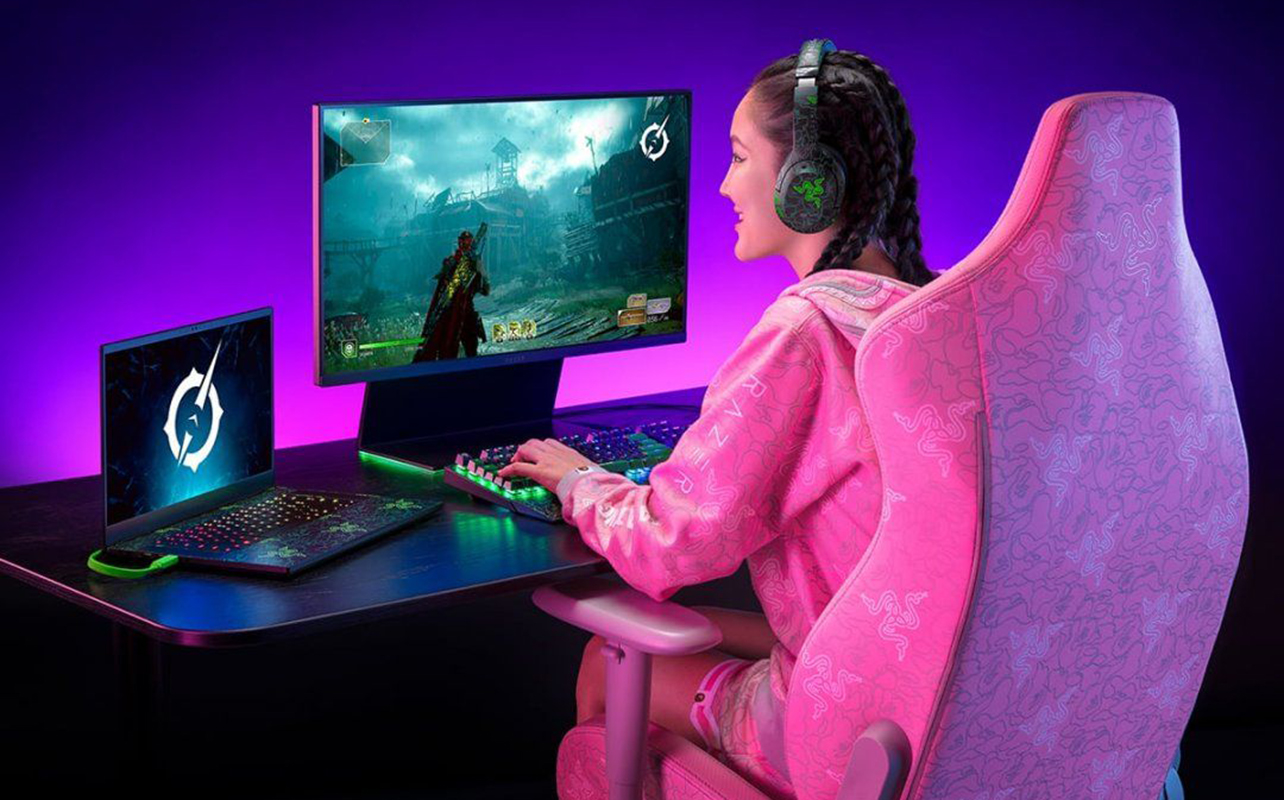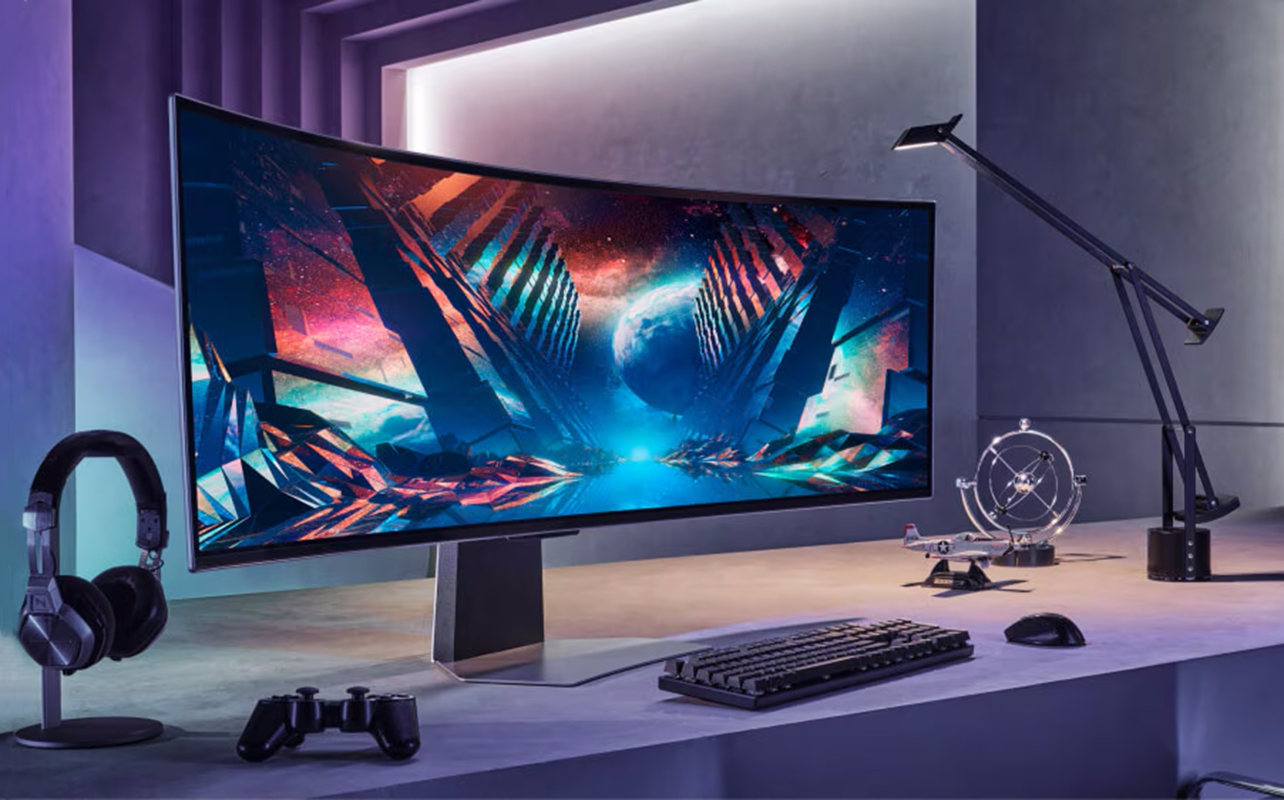
When you’re sitting down and fire up the game of your choice, the monitor in front of you sets the stage. That could be a compact 24-inch screen keeping every corner of Valorant in your line of sight, or a sweeping 32-inch display pulling you into the neon streets of Cyberpunk 2077. That’s the beauty of gaming monitors: they shape how you experience every moment.
It’s just that the best size isn’t always the biggest. You want to find the right fit for your playstyle, setup, and how far you sit from the screen.
In this gaming monitor size guide, we’ll break down the pros and cons of different monitor sizes (from 24- to 49-inch ultrawide), show you how factors like resolution and field of vision affect the experience, and give you clear recommendations for casual, competitive, console, and hybrid setups.
Key factors that impact monitor size choice
A few key factors will make one size shine for you and another feel too much. You can also learn more about all these factors by checking out our gaming monitor buying guide.
Viewing distance
The closer you sit, the smaller your screen should be. Sit too close to a large panel and you increase how much your head and eyes move, constantly darting your eyes or turning your head to see what’s happening. A 24-inch monitor works perfectly if you’re less than two feet away, while a 32-inch display needs a bit more distance.
Field of vision (FOV)
In competitive games, keeping your eyes on the entire screen matters more than cinematic scale. A smaller monitor lets you track all the action without extra head movement, which is why many esports pros stick to 24- or 25-inch screens.
Resolution
Your monitor size only looks good when it matches resolution. A 32-inch 1080p monitor can look blurry or pixelated compared to the same screen at 1440p or 4K. If you’re going bigger, higher resolution is a must to keep things sharp.
Desk space
It might sound basic, but it won’t be a fun upgrade if the monitor barely fits your desk—or worse—blocks your speakers or shelves. Always measure your setup first before researching what you feel you need and committing to one option.
Peripheral vision
Ultrawide monitors and curved monitors can wrap around your vision for maximum immersion, which is great for racing sims or cinematic RPGs. Not so much in fast-paced FPS titles because of they can actually slow down your scanning speed when you must spread your attention across a wider horizontal space.
Best monitor sizes for competitive/FPS gaming
If you play mostly shooters or anything where milliseconds count, the best monitor size for competitive gaming falls between 24-27 inches.

Why smaller is better
A compact display lets you see the entire screen without turning your head. That translates into faster reaction times and better accuracy. Pairing that size with 1080p or 1440p resolution and a 240Hz–360Hz refresh rate gives you the speed competitive titles demand.
Pros:
- Lower latency and faster input response
- Easier to keep your entire FOV in sight
- Standard in esports arenas and tournaments
Cons:
- Less immersive for story-driven games
- Not ideal if you want a dual-purpose monitor for work or streaming
If your focused on esports, the sweet spot is 24- or 25-inch at high refresh rates. For a touch more immersion without losing speed, 27-inch is a safe upgrade.
Best monitor sizes for casual and immersive gaming

If you’re into expansive RPGs, open-world adventures, or cinematic story games, the best screen size for casual gaming is between 27-32 inches. These sizes balance immersion with usability. At 27 inches, 1440p resolution offers sharp detail without overwhelming most GPUs. At 32 inches, you’ll want either 1440p or 4K for crisp visuals. This range also works beautifully if you multitask, be it gaming on one side of the screen and running Discord or Spotify on the other.
Pros:
- Larger displays enhance immersion and cinematic feel
- Great for multitasking, streaming, or hybrid setups
- Many models come with HDR or OLED for richer colours
Cons:
- Can overwhelm smaller desks
- May be uncomfortable at short viewing distances
- Not as precise for twitch shooters
If you play a mix of games and enjoy both productivity and entertainment on the same screen, 27–32 inches is your comfort zone.
Ultrawide and super-ultrawide monitors (34–49 inches)

For gamers who want to feel inside the game world, ultrawide monitors are unmatched. Ranging from 34-49 inches, these displays offer aspect ratios of 21:9 or even 32:9—essentially two monitors stitched together.
They’re especially popular in flight simulators, racing sims, and immersive single-player experiences where panoramic vision adds realism. But keep in mind: not every game supports ultrawide properly, and competitive FPS titles often don’t benefit from it. You’ll also need a powerful GPU to handle resolutions like 3440 x 1440 or 5120 x 1440 at smooth frame rates.
Best for:
- Racing sims, flight sims, and exploration-heavy RPGs
- Players who also multitask heavily (streaming, editing, browsing)
Not ideal for:
- Competitive shooters where reaction time is key
- Compact setups without the desk depth to hold such a wide screen
Choosing between ultrawide vs. standard gaming monitors? Choose ultrawide if immersion and multitasking are priorities or stick with standard if you value simplicity and speed.
Console gaming: what monitor size is best?
Console players—especially on PlayStation 5 and Xbox Series X—have different needs. Sitting further back (three to five feet away) means you’ll want a bigger screen, ideally 27-32 inches.
Modern consoles support 4K at up to 120Hz over HDMI 2.1, so pairing them with a monitor that matches those specs is key. Look for HDR and Variable Refresh Rate (VRR) support to smooth out frame pacing.
Audio is another factor. Unlike PC monitors, console-friendly displays sometimes include built-in speakers, or at least pass-through audio for external setups. You may find more flexibility in setting up the kind of sound system you want in this case.
If you’re mainly gaming from a chair or couch, 27–32 inches in 4K is your best bet. Larger than that, and you may be better off with a TV.
Dual purpose monitors (gaming + productivity)
If you’re working from home, streaming, or editing on the same desk where you game, you’ll need a monitor that balances both sides of your life.
The best choices here are 27-inch QHD (1440p) or 32-inch 4K monitors. They give you enough space for spreadsheets or video editing timelines while still offering smooth gameplay.
Ultrawide 34-inch monitors also work well for dual-purpose setups, provided you’ve got the desk space and don’t mind the curve. Pairing your monitor with a quality monitor arm or adjustable stand also makes a big difference in comfort. Not to mention saving space on your desk since it’s not sitting on top of it.
For gamers who also clock in hours on work or content creation, look for 27–32-inch monitors with high resolution and ergonomic flexibility
Side-by-side comparison: monitor size by gaming type
Use this chart as a quick reference to compare playstyles, resolutions, and refresh rates. See which option lines up with your setup.
| Playstyle | Recommended size | Resolution | Ideal refresh rate |
|---|---|---|---|
| Competitive/FPS | 24″–27″ | 1080p or 1440p | 240Hz–360Hz |
| Casual/Immersive | 27″–32″ | 1440p or 4K | 120Hz–165Hz |
| Sim/Racing | 34″–49″ ultrawide | 1440p ultrawide+ | 100Hz–165Hz |
| Console gaming | 27″–32″ | 4K (HDMI 2.1) | 120Hz |
| Work + gaming hybrid | 27″ QHD or 32″ 4K | QHD or UHD | 120Hz+ |
Find the perfect gaming monitor
If you’re ready to upgrade, check out the gaming monitors at Best Buy, where you can browse by size, resolution, and use case. Or, drop by a store to see the difference in person—it might surprise you which size feels just right.
This article was drafted using AI technology and then reviewed, fact-checked, and revised by a member of our editorial team.





